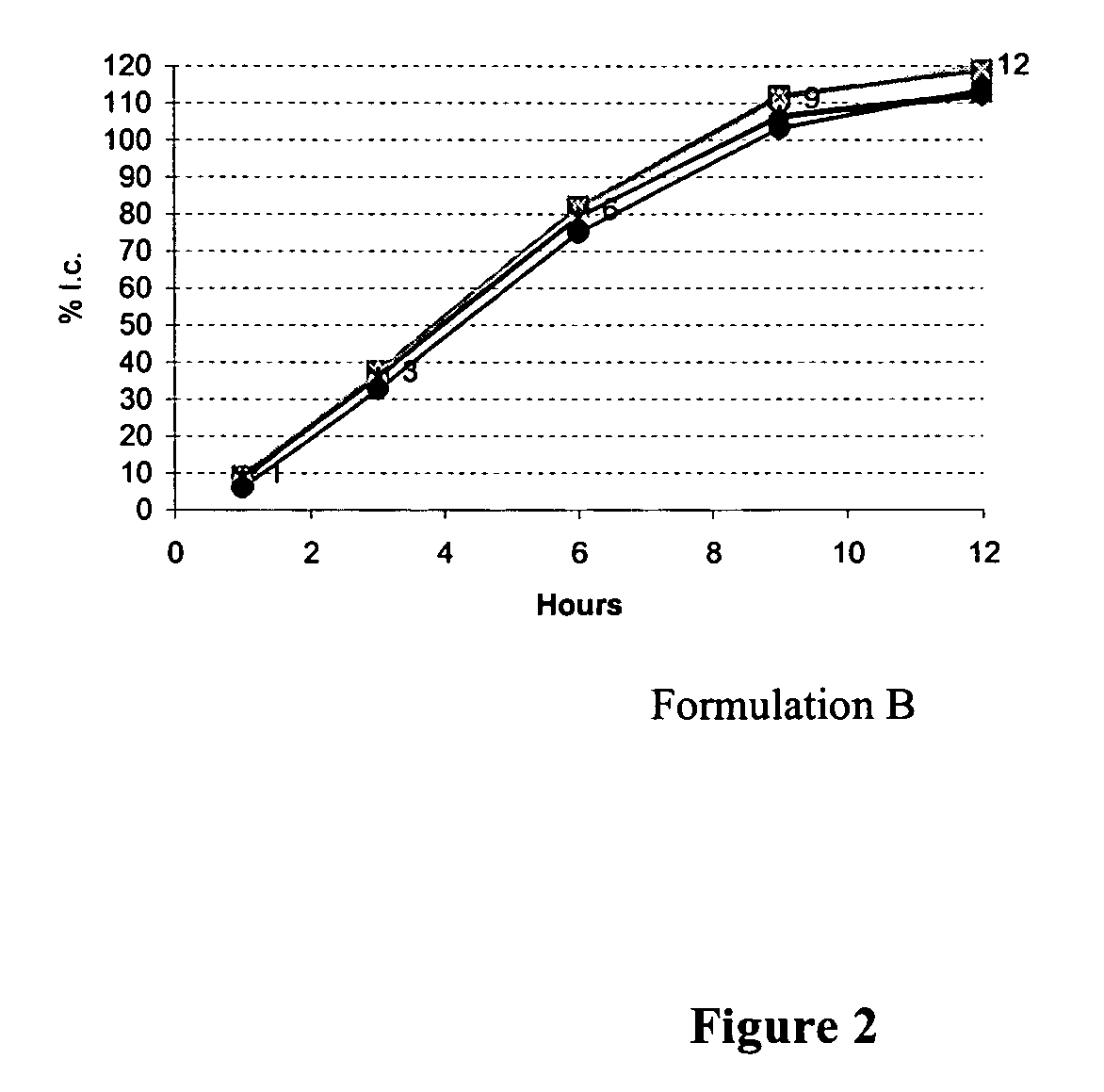Coated tablet with zero-order of near zero-order release kinetics
a technology of release kinetics and coating tablets, which is applied in the direction of coatings, dragees, pharmaceutical delivery mechanisms, etc., to achieve the effects of suppressing the release rate, preventing the immediate onset of solubilization, and relatively high molecular weight of polyethylene oxid
- Summary
- Abstract
- Description
- Claims
- Application Information
AI Technical Summary
Benefits of technology
Problems solved by technology
Method used
Image
Examples
example 1
Drug Delivery Devices Containing a Hydrophilic Drug
[0065] Table I shows two example formulations that were developed to obtain a zero-order / near zero-order in-vitro dissolution rate and their respective dissolution profiles (FIGS. 1 and 2). The active pharmaceutical ingredient used in each formulation was used at a low dosage strength (1 mg), and is a highly water soluble active pharmaceutical ingredient.
TABLE IFormulations for zero / near-zero-order release tabletsFormulation A:Formulation B:APIAPIKollidon SRPolyethylene oxide N750Polyethylene oxide N303Polyethylene oxide N303EmcompressEmcompressPruvPruvSurelease coating 3%Surelease coating 5%
[0066] Testing Procedure:
[0067] The release rate of the API from the tablets in Formulations A and B can be determined by dissolution. In this case, the dissolution of six tablets, one per vessel, was measured in 900 mL of dissolution media at 37° C. Samples were removed at timepoints of 1, 3, 6, 9, 12 and 24 hours. The samples were analyzed...
PUM
| Property | Measurement | Unit |
|---|---|---|
| solubility | aaaaa | aaaaa |
| hydrophilic | aaaaa | aaaaa |
| amphiphilic | aaaaa | aaaaa |
Abstract
Description
Claims
Application Information
 Login to View More
Login to View More - R&D
- Intellectual Property
- Life Sciences
- Materials
- Tech Scout
- Unparalleled Data Quality
- Higher Quality Content
- 60% Fewer Hallucinations
Browse by: Latest US Patents, China's latest patents, Technical Efficacy Thesaurus, Application Domain, Technology Topic, Popular Technical Reports.
© 2025 PatSnap. All rights reserved.Legal|Privacy policy|Modern Slavery Act Transparency Statement|Sitemap|About US| Contact US: help@patsnap.com


